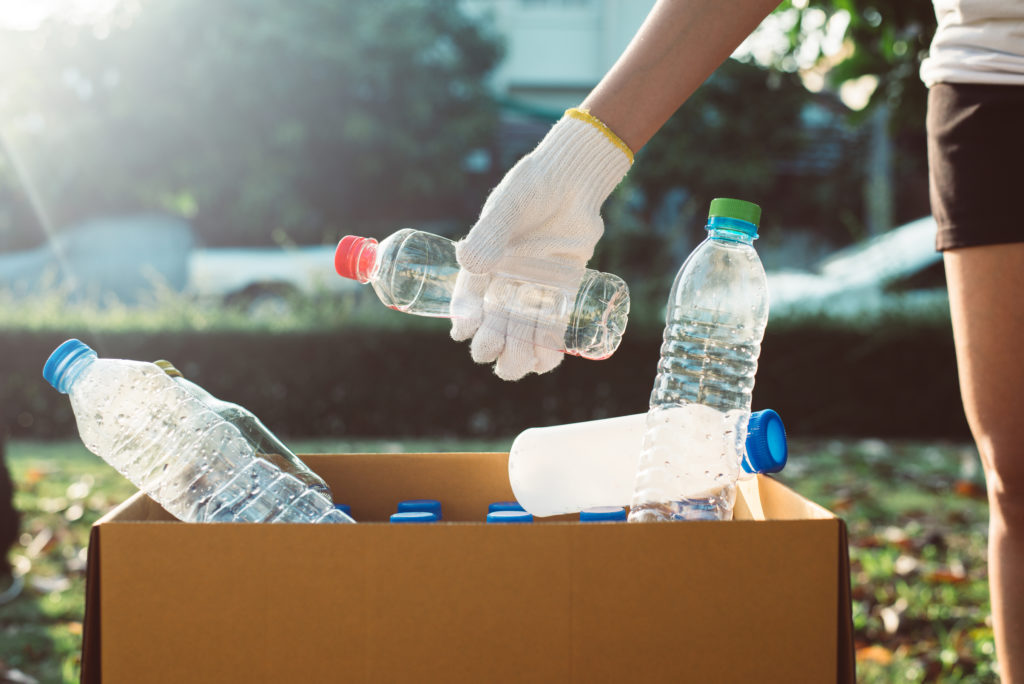
When you hear the words sustainable living, you might picture everything from harvesting veggies from your own hydroponic garden to bringing reusable bags to the grocery store. But what does it really mean to live sustainably?
In short, sustainability refers to the actions we take to use the earth’s finite natural resources wisely and preserve them for future generations. Sustainable living, then, involves our efforts to reduce our consumption of resources on an individual level and at scale. When we combine our efforts, living sustainably can have a positive impact on our planet, its ecosystems, our communities, and our economies.
The actions we take to live sustainably can look different from person to person. Fortunately, there are easy ways to make more sustainable choices every day—from making informed choices while shopping to changing how you manage your money.
#1 Commit to Learning About the Climate
Living sustainably doesn’t necessarily mean that you have to reinvent your lifestyle from day one. It involves taking small, simple steps to put the planet first in your daily habits. In order to do so, it can help to first learn more about what you’re trying to achieve.
However, it’s also important to recognize that learning about the climate and sustainability is an ongoing commitment, and the climate action movement is constantly changing. This is because:
- Scientists are still learning about the impacts of climate change.
- Innovators are continuously developing new sustainable innovations and technologies.
- Worldwide climate protection policies are still taking shape.
Thus, one of the most important aspects of sustainable living is staying educated and committing to continuous learning and exploration.
What can you do to stay up to date on the latest sustainability developments, discoveries, and news? Try out the following tactics:
- Subscribe to an environmentalist newsletter or news outlet, like The Good Trade’s newsletter on sustainable living.
- Set search engine alerts for climate-related news articles.
- Bookmark climate statistics aggregators and check for new data regularly. The NASA Earth Observatory is an excellent resource for climate data and allows you to track 16 different climate factors.
- Attend, watch, or host panels featuring climate change and sustainability experts. The United Nations website is an excellent place to check for upcoming climate-related events, some of which are live-streamed online.
- Sign up for updates from sustainable think tanks, tech incubators, or labs. For instance, the World Resources Institute constantly shares information on sustainable initiatives and research.
When you’re equipped with the most current knowledge, you increase your chances of acting as environmentally responsible as possible.

#2 Create Less Waste and Dispose Responsibly
Responsibly managing waste is one of the most important tasks individuals can prioritize to impact the planet positively.
A sustainable waste management plan has two major aims:
- Reducing your overall waste production
- Responsibly disposing of the waste you inevitably produce
How can you accomplish both of these? You can reduce your overall waste by:
- Shopping wisely – Choosing items with minimal packaging and avoiding overbuying can help you reduce solid and food waste.
- Composting – Composting is one of the best ways to reduce food waste. Composting helps break down organic materials so they can be more easily recycled back into the earth. You can compost fruit and veggie scraps, coffee grounds, filters, eggshells, cotton, wool, and even fireplace ashes.
- Switching out single-use plastics and paper – Instead of reaching for the paper towel roll when you need napkins for dinner, why not grab actual linen napkins you can toss in with the laundry? Consider bringing a reusable tote to the grocery store instead of buying a plastic bag. Even these small swaps can make a difference in reducing your paper and plastic waste.
When you do create waste, you should also take care to properly dispose of it to prevent pollution and reduce your emissions footprint:
- Make sure that all of your trash is secure in your bins to prevent litter from flying away
- Safely burn yard trash (when you can) to reduce the emissions burden of garbage trucks
- Follow your local guidelines for sorting, cleaning, and storing recyclables
#3 Reduce and Offset Emissions
Reducing your reliance on fossil fuels is crucial to decarbonizing your lifestyle. But, some emissions are inevitable—if you need to travel for work or visit a loved one, sometimes a plane ride is the only option.
Managing your carbon emission through an environmentalist lens can take one (or both) of the following forms:
- Emissions reductions, which you can accomplish via carpooling, walking, or biking instead of driving or riding, or using public transit.
- Offsetting your carbon footprint with the help of carbon credit exchanges, investments in carbon capture operations, and built-in offsetting via an eco-friendly debit card or other means
Carbon offsetting is becoming a significantly more accessible option for consumers—especially with the advent of technologies like Aspiration Zero, a green credit card that helps tackle your carbon foorprint by planting a tree for every purchase you make.
#4 Use Green Money Management
Speaking of carbon offsetting with help from eco-friendly financial innovations, let’s talk about how traditional banks have an environmental impact.
In 2021 alone, the world’s largest banks funneled $742 billion in financing to fossil fuel manufacturers and projects. Simply put, big banks don’t turn a blind eye to climate change—they’re complicit in the world’s continued reliance on fossil fuels and other nonrenewable energy sources.
How can consumers who want to live sustainably divest from an ecologically disastrous money management infrastructure? Enter sustainable financial services from not a bank—Aspiration. We prioritize the climate while helping you:
- Manage your money
- Invest in the green economy
- Offset your carbon emissions
- Earn interest on your hard-earned savings.
Many banks and other financial service providers lend the cash from your savings account to borrowers, charging them interest—which they use to pay you interest on your savings and turn a profit. But, instead of lending your money to environmentally irresponsible projects, we fund initiatives that make a positive impact.
In pursuit of a sustainable lifestyle, it might be time to ditch your big bank in favor of a sustainable banking alternative.

#5 Shop Responsibly
Shopping is an integral part of our modern life—but buying groceries, pet food, pharmacy items, and clothes doesn’t have to conflict with your climate-aware philosophy.
Make personal strides to responsible consumption and learn how to shop sustainably by:
- Bringing your own bags to the store
- Avoiding products with excessive packaging
- Sticking to a shopping list to avoid buying products you don’t need
- Carpooling to the store to reduce your emissions footprint
Bolster your local green economy by:
- Buying from sustainable brands
- Encouraging your peers to make sustainable shopping choices
- Bringing your favorite local businesses into the fold
Living a sustainable lifestyle shouldn’t stop when you walk out the front door. Money is power, and promoting sustainability with your wallet is an excellent way to make an impact on the planet. Need additional guidance? Discover some of our top tips for how to shop sustainably.
#6 Share the Good News About Sustainability
Don’t keep your hard-earned environmental issues knowledge and pro-sustainability tips to yourself—encourage the people around you to join the fight. A sustainable future starts with environmental awareness and each person making a more sustainable choice in their lifestyle.
Even if your friends, family, or neighbors don’t prioritize climate action, they’re capable of change. And, if you try any of the following tactics to convince them to live sustainably, you might be the first person who took the time to help:
- Encourage your neighbors to recycle if you don’t see them using bins
- Share climate news, technology, and policy updates on social media
- Organize or attend green community meetings or sustainability events in your area
You might remember the first person who introduced you to the climate crisis—you can be that person for someone else.
#7 Pressure Powerful Institutions to Make Change
Individual efforts should be encouraged. But, massive corporations are the biggest emitters, and they routinely use their financial power to influence climate policies in the United States and beyond.
Governments and publicly-funded regulatory agencies are the only entities that can hold mega-emitters accountable, and the world needs widespread policy change on every level to decarbonize, innovate solutions, and secure a stable climate future.
Thus, a sustainable lifestyle demands a glance at the bigger picture—encourage your peers to:
- Pressure your local, state, and federal representatives to take immediate climate action
- Avoid purchasing products from the world’s biggest emitters
- Donate to lobbying organizations that promote green policy change
To achieve climate change reversal at scale, the world must achieve a balance of individual responsibility and top-down institutional change for future generations to come.
Live Sustainably with a Green Financial Services Provider
Sustainable living might sound like a simple proposition, but taking climate action requires attention to scientific and policy developments, individual changes, and engagement with powerful entities—living green is no small feat.
At Aspiration, we’re putting the power of money back in your hands. When you divest from your big bank and manage your money with Aspiration, you can rest easy knowing that every element of your financial life—from your debit and credit purchases to your investments and savings account—positively impacts the planet.
We offer all of the services you’d expect from a top-tier financial institution and more, and in just a few clicks, you can start making change with your wallet and live a more sustainable life.
Sources:
United States Environmental Protection Agency. Learn About Sustainability. https://www.epa.gov/sustainability/learn-about-sustainability
Forbes. Consumers Demand Sustainable Products and Shopping Formats. https://www.forbes.com/sites/gregpetro/2022/03/11/consumers-demand-sustainable-products-and-shopping-formats/?sh=3a40f0206a06
US Environmental Protection Agency. Composting at Home. https://www.epa.gov/recycle/composting-home
Columbia University. What Is Decarbonization, and How Do We Make It Happen?. https://news.climate.columbia.edu/2022/04/22/what-is-decarbonization-and-how-do-we-make-it-happen/
Reuters. World’s Top Banks Pumped $742 Bln into Fossil Fuels in 2021 – Report.https://www.reuters.com/business/sustainable-business/worlds-top-banks-pumped-742-bln-into-fossil-fuels-2021-report-2022-03-30//
The Mint. How Banks Work. https://www.themint.org/teens/how-banks-work.html
Open Secrets. Companies with the Highest Carbon Emissions Spend Big in Government. https://www.opensecrets.org/news/2021/08/companies-highest-carbon-emissions-spend-big/
Time Magazine. Lifestyle Changes Aren’t Enough to Save the Planet. Here’s What Could. https://time.com/5669071/lifestyle-changes-climate-change/


